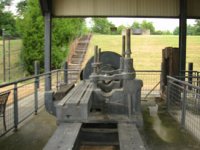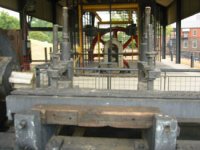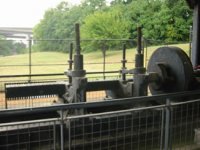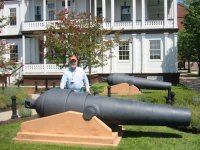Danny Boy (a/k/a The Tabasco Terrorist) -
There are several really good prospects for the recovery & positive identification of at least two or three more Selma-cast tubes in locations other than Selma. Further, I have reliable "living witness" reports from several sources detailing the recovery of several gun tubes from the river in Selma ranging from around 1938 to just after the second world war. These tubes have proven elusive, but may be related to the next "sighting". At least two, and possibly three large tubes were seen (and almost purchased) at one point in a scrap metal yard there as late as the mid-'60's but those have vaporized - probably literally in the salvage process. Granted, that sighting (unfulfilled) does not make much sense given the revived interest resulting from the Centennial celebrations then prevailing, but that one source is both living and beyond doubt. There were also significant numbers of larger projectiles stacked in the same location, but the sale (ironic) of those to the old foundry operation ceased after a live shell found it's way into the furnace. The handling of the tubes by all but the folks at the National Archives has been somewhat cavalier at best. Several of the more significant recoveries and restoration/preservation efforts have been undertaken by private rather than governmental (at any level) interests, and to them we owe the presence and accessibility to those magnificent relics.
In the same way we owe the availability and accessibility to many land and water recovered artifacts to the men like Steve Phillips and others who used their time and money to save those items for the rest of us. I now subscribe to the proposal that we do not own such things, but that we are merely the fortunate caretakers for our generation(s). If such an item is necessarily sold it is to be considered just repayment for such efforts to keep and care for them. Steve has had to bear a huge burden for doing what was once encouraged as an element of the economic engine in Selma. Many community leaders were involved and several local business's were based on sport diving and artifact recovery from the river. The trouble did not begin until one local trouble maker (and jealous diver) began to agitate for "something to be done" and in the vastness of their ignorance the powers that then prevailed pounced upon a good man undertaking a worthy effort. Subsequent rulings in law and changes in both structure and interpretations of relevant state laws proved the continued right of access to the river and the materials therein by sport divers.
Without folks like Steve, Spencer, Forrest and others, the folks like me would have nothing to report or write about. Believe me, the community of historians and curators is hugely grateful to those diggers, divers, collectors, and inheritors who have accumulated, recorded, and shared their relics.
This message is one I present each and every time I am asked to speak on the subject. Phillips et al now have a base of support in Selma if the need arises.
Again, my sincere gratitude to all concerned. Now, just where is that next tube coming from?!





